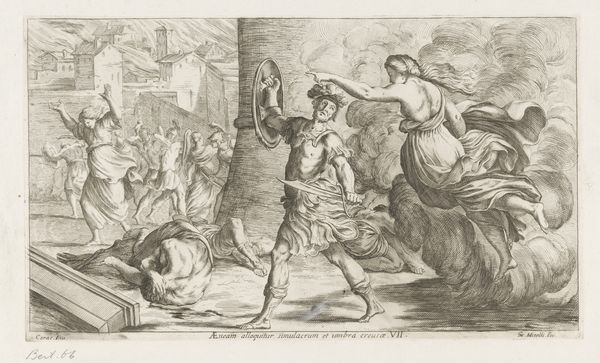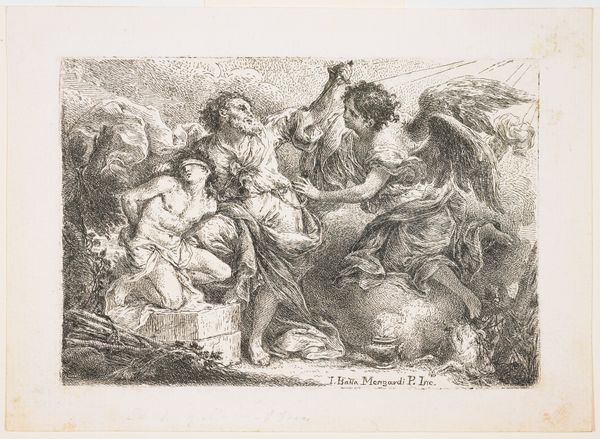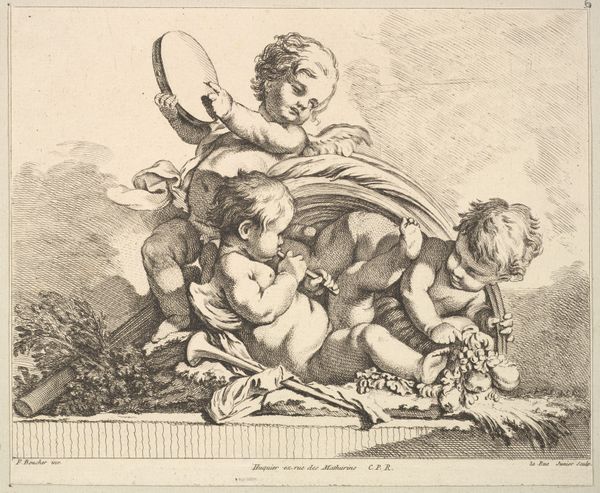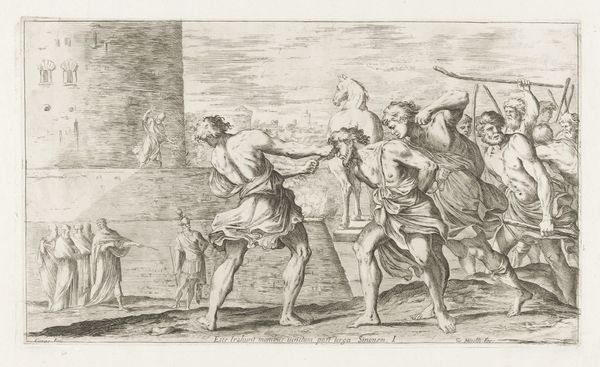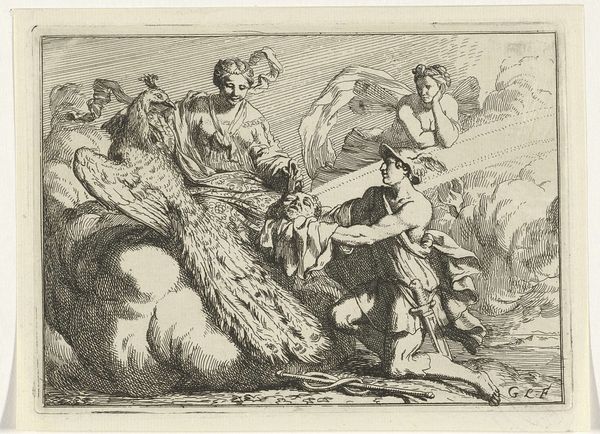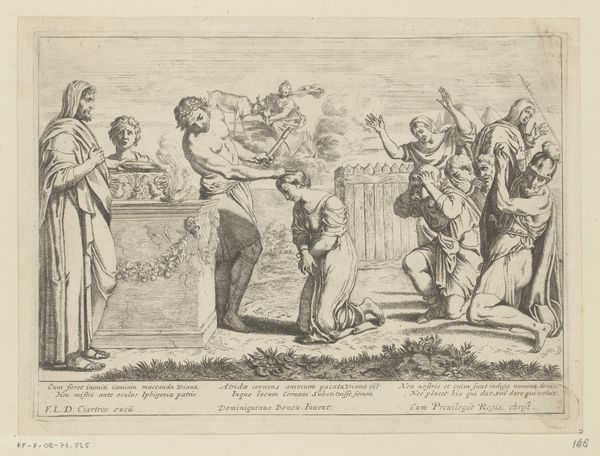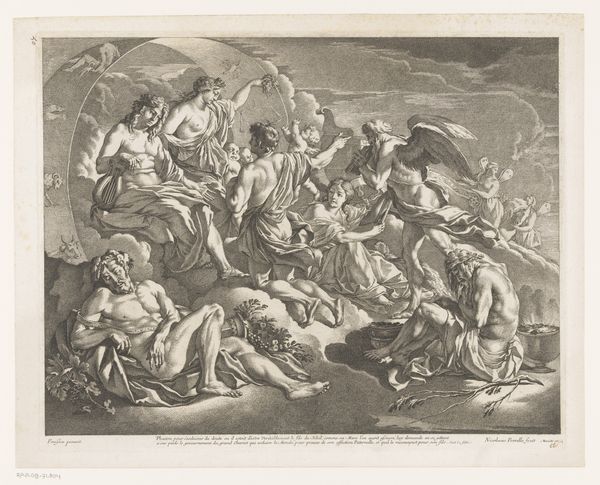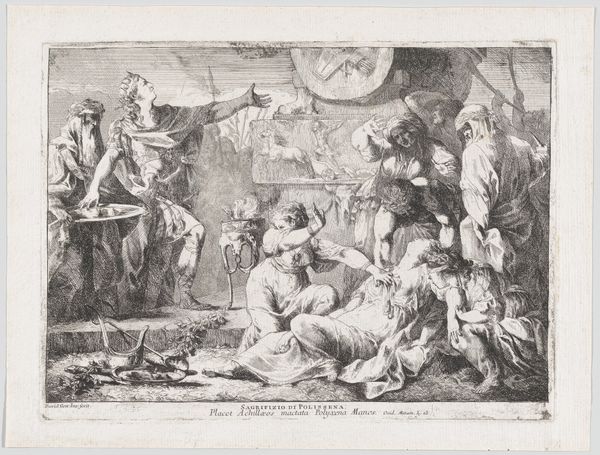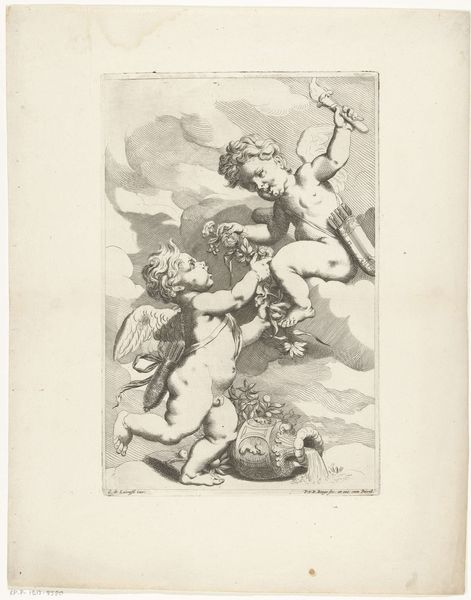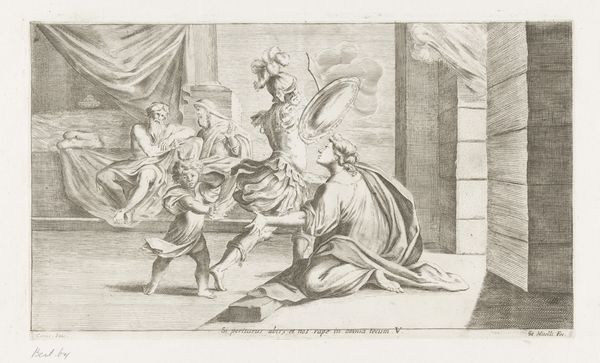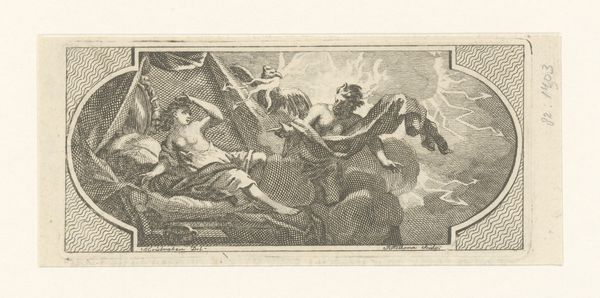
print, etching
#
narrative-art
#
baroque
# print
#
etching
#
landscape
#
figuration
#
history-painting
Dimensions: height 270 mm, width 328 mm
Copyright: Rijks Museum: Open Domain
Giovanni Battista Pasqualini created this print, "Erminia en Vafrino vinden Tancredi", sometime in the early 17th century. It stages a dramatic moment of discovery, but also reveals the social codes of its time. Look at the figures. Erminia and Vafrino, finding the wounded Tancredi, embody contrasting social positions. Erminia, with her delicate features and elaborate dress, signals aristocratic status, while Vafrino, with his turban, hints at foreign, perhaps even enslaved origins. This contrast wasn't merely decorative; it reflected the rigid social hierarchies of 17th-century Europe. Pasqualini, working in Italy, was likely influenced by the patronage system, where artists depended on the nobility and the church for commissions. To truly understand this work, we can consult historical texts, fashion studies, and social histories. Only then can we appreciate how Pasqualini's art was both a product of and a commentary on his world.
Comments
No comments
Be the first to comment and join the conversation on the ultimate creative platform.


